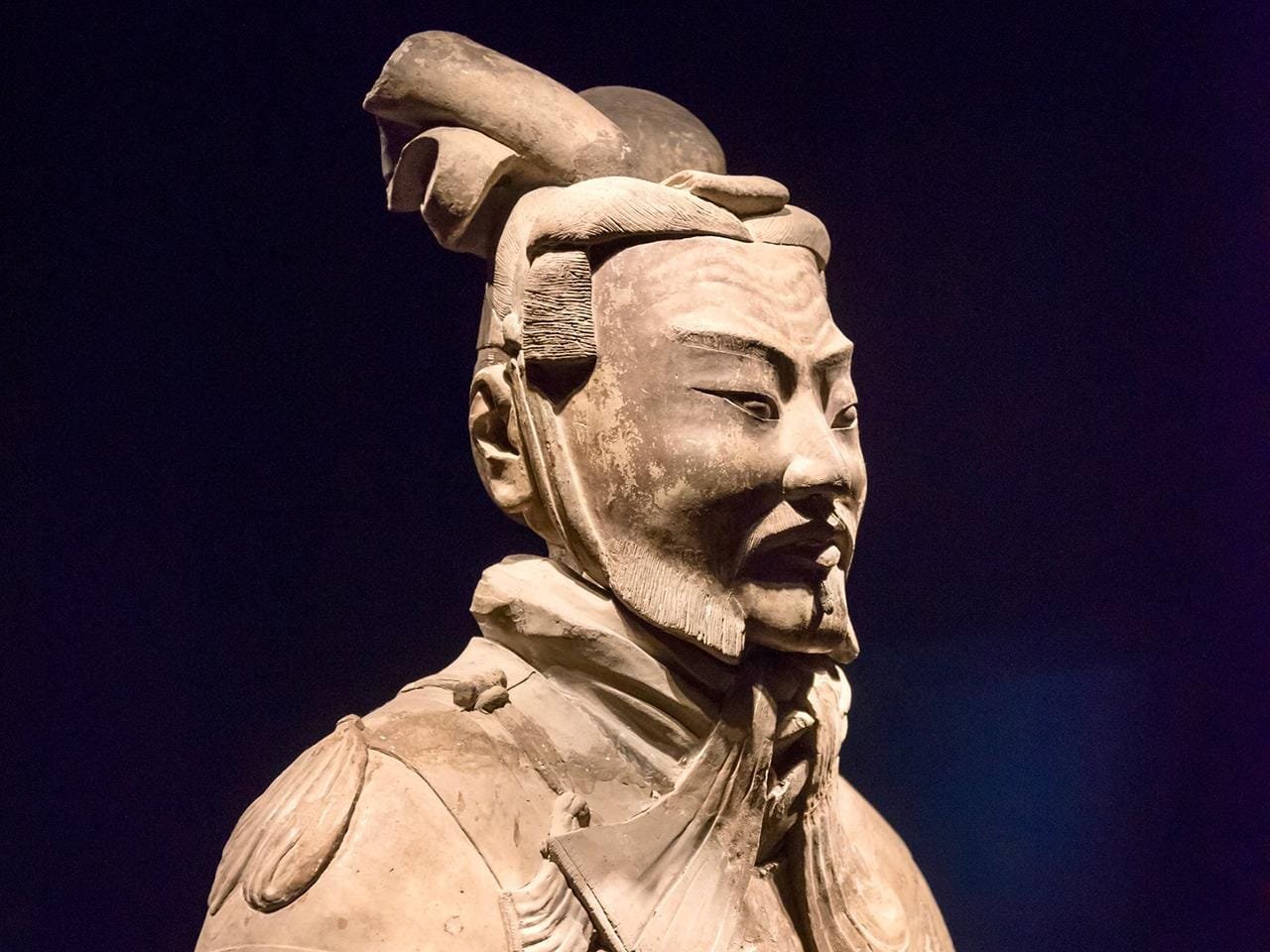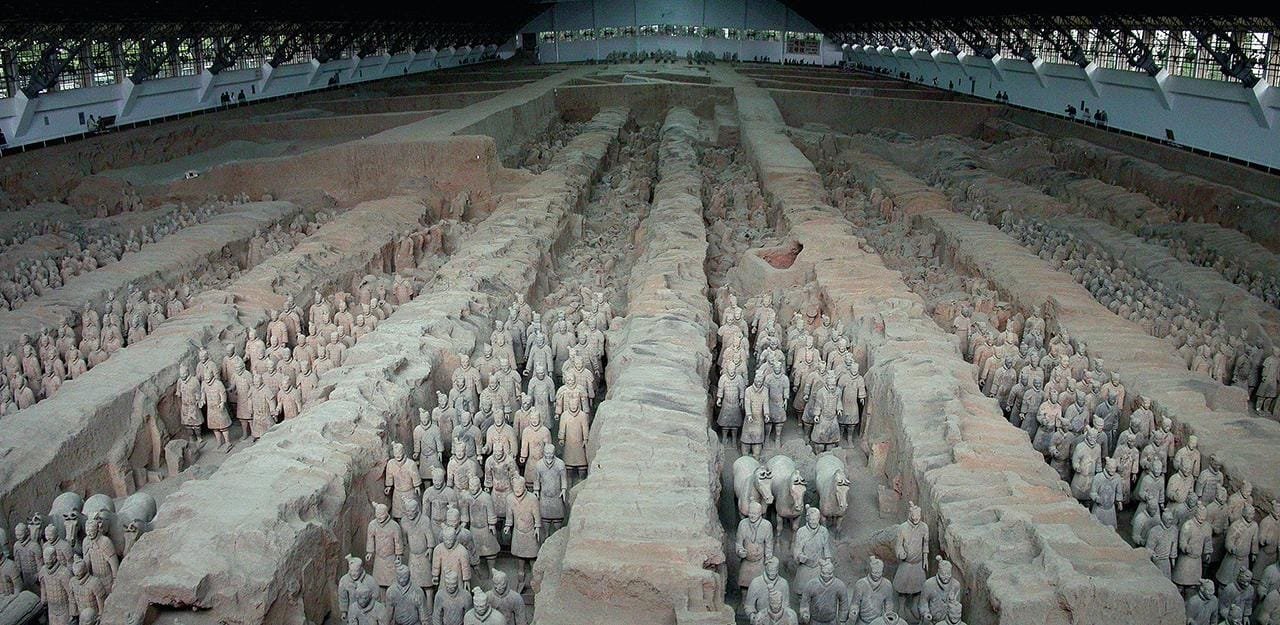Archaeologists at the Mausoleum of Qin Shi Huang in Xi’an’s Lintong District, China, have uncovered a terracotta warrior believed to represent a senior military commander. This significant find is the first of its kind from Pit No. 2 since formal excavations commenced in 1994.
 Only 10 terracotta high-ranking commanders have been discovered among the 2,000 terracotta figurines that have been found so far. Credit: Bill Dickinson, Flickr
Only 10 terracotta high-ranking commanders have been discovered among the 2,000 terracotta figurines that have been found so far. Credit: Bill Dickinson, Flickr
The Mausoleum of Qin Shi Huang, the first emperor of China and unifier of the nation, is a sprawling burial complex constructed over 38 years by a workforce of 700,000 laborers. Its centerpiece is a 76-meter-tall hillock shaped like a truncated pyramid, beneath which lies the emperor’s main burial chamber. Historical texts, particularly the “Records of the Grand Historian” by Sima Qian, describe the tomb’s interior as a vast chamber containing palaces, scenic towers, a bronze coffin, and treasures collected from across the empire.
Pit No. 2, where the commander figurine was unearthed, is believed to represent a military guard formation. Alongside this commander, archaeologists also uncovered two high-level officer figurines and five other terracotta figures clad in contemporary armor. Remarkably, only 10 senior officer figurines have been discovered among the thousands of terracotta warriors excavated to date. Zhu Sihong, the head of the excavation project stated: “Based on its location, we believe this figure was likely the highest-ranking military commander of this unit.”
The general figurine, as such high-ranking figures are known, is distinguished by its intricate headdress, ornate armor adorned with patterns and ribbon knots, and a characteristic posture with hands clasped in front of the abdomen. The discovery also included remnants of chariots and horses, which experts say are consistent with the military formations of the time. Since the resumption of formal excavations in 2015, Pit No. 2 has revealed a variety of formations, including cavalry, crossbowmen, and mixed units.
 The Terracotta Warrior Army in the Mausoleum of Qin Shi Huang. Credit: Slices of Light, Flickr, CC BY-NC-ND 2.0
The Terracotta Warrior Army in the Mausoleum of Qin Shi Huang. Credit: Slices of Light, Flickr, CC BY-NC-ND 2.0
This year marks the 50th anniversary of the discovery of the Terracotta Warriors, first unearthed in 1974 when local farmers stumbled upon fragments while digging a well. Over five decades, archaeologists have excavated more than 2,000 life-sized figures, along with bronze chariots, stone armor, and other cultural relics across three pits covering over 20,000 square meters. The Qin Terracotta Warriors were designated a UNESCO World Heritage Site in 1987.
The Qin Shihuang Mausoleum Museum stated that the meticulous restoration process for the newly found figurine is already underway. Staff are conducting deep cleaning and preliminary ᴀssembly in preparation for detailed analysis and display.





